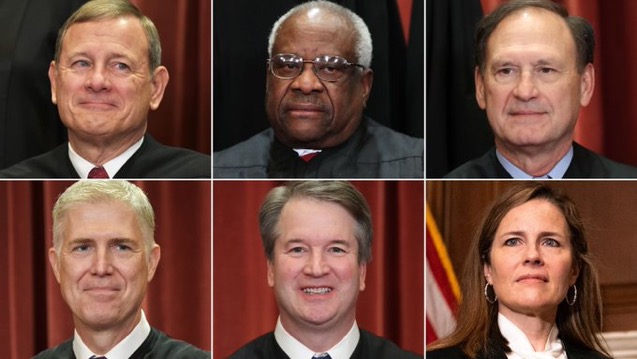The Supreme Court’s recent ruling on the Harvard Affirmative Action case sets new limits on race-based admissions programs.
Also read | Who is Christian Robinson? 17-year-old charged in shooting at party in northwest Harris County
In a significant ruling, the Supreme Court has set new limits on Affirmative Action programs in the case involving Harvard University’s admissions practices. The decision, authored by Chief Justice John Roberts, states that Harvard’s race-conscious admissions program violates the equal protection clause of the Fourteenth Amendment. The vote was 6-2 due to the recusal of Justice Ketanji Brown Jackson, who had served on the board of overseers at Harvard.
This landmark case brings Affirmative Action, a policy used for decades by colleges and universities to address inequality and promote diversity, into the spotlight. Previous Supreme Court rulings had allowed schools to consider the race of applicants as one factor among many, as long as quotas were not used and it served the pursuit of a diverse student body.
The lawsuit against Harvard was filed by Students for Fair Admissions, a conservative group that alleged intentional discrimination against Asian American applicants in Harvard’s admissions process. The Supreme Court ruled in favor of the group, stating that Harvard’s admissions program lacked measurable objectives, employed racial stereotypes, and did not have meaningful end points.
The court’s decision marks a departure from over 40 years of legal precedent and has significant implications for the college admissions process in the United States. While it appears to preserve consideration of race in a more narrowly tailored way, such as through an applicant’s essay or narrative, it limits the use of race as a factor in admissions decisions.
The ruling emphasizes that race-based admissions should be within strict restrictions, avoiding negative stereotypes, and with an eventual end point. It does not prohibit universities from considering an applicant’s discussion of how race affected their life experiences.
Students for Fair Admissions celebrated the court’s decision and expressed their intent to litigate against schools that disregard the ruling. UNC, another university involved in a similar case, expressed disappointment but affirmed its commitment to comply with the law while promoting diversity.
The dissenting opinions from Justices Sotomayor and Jackson criticized the majority’s decision, claiming that it rolls back decades of progress and disregards the reality of race in American society. They argued that race-conscious admissions are essential in addressing systemic inequalities and solving real-world problems.
The Supreme Court’s ruling on the Harvard Affirmative Action case marks a significant shift in the interpretation of race-based admissions programs. It has ignited debates surrounding the constitutionality and implicationAffirmative Action, leaving colleges and universities to reassess their admission policies in light of the new restrictions imposed by the court.







